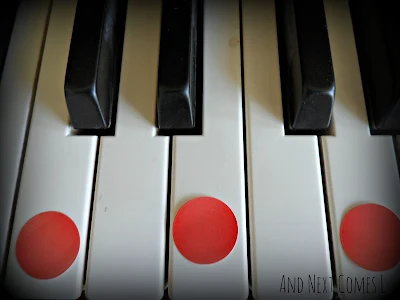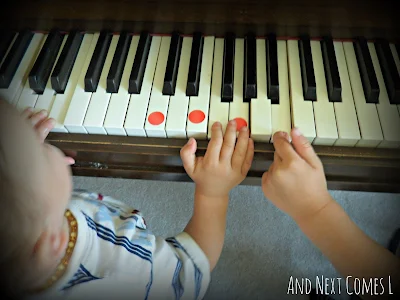I was inspired by this post on Living Montessori Now, where she used stickers to encourage the kids to play major and minor scales. So I used that technique for this chord activity.
Right away, K, with J supervising, started to play the notes with the stickers on them.
The boys played the notes one at a time, which, as I told them, is a broken chord. I then illustrated how to play all three notes at the same time, telling them that I was playing a solid chord.
As you work through the chords, encourage your child to describe the sound. Does the chord sound happy? Or sad? Or just plain weird? Those happy sounding ones are the major chords, while the sad sounding ones are the minor keys. And the weird one...well, that's a diminished chord (like B-D-F).
And K, being the toddler that he is, tried to pick the stickers off...







